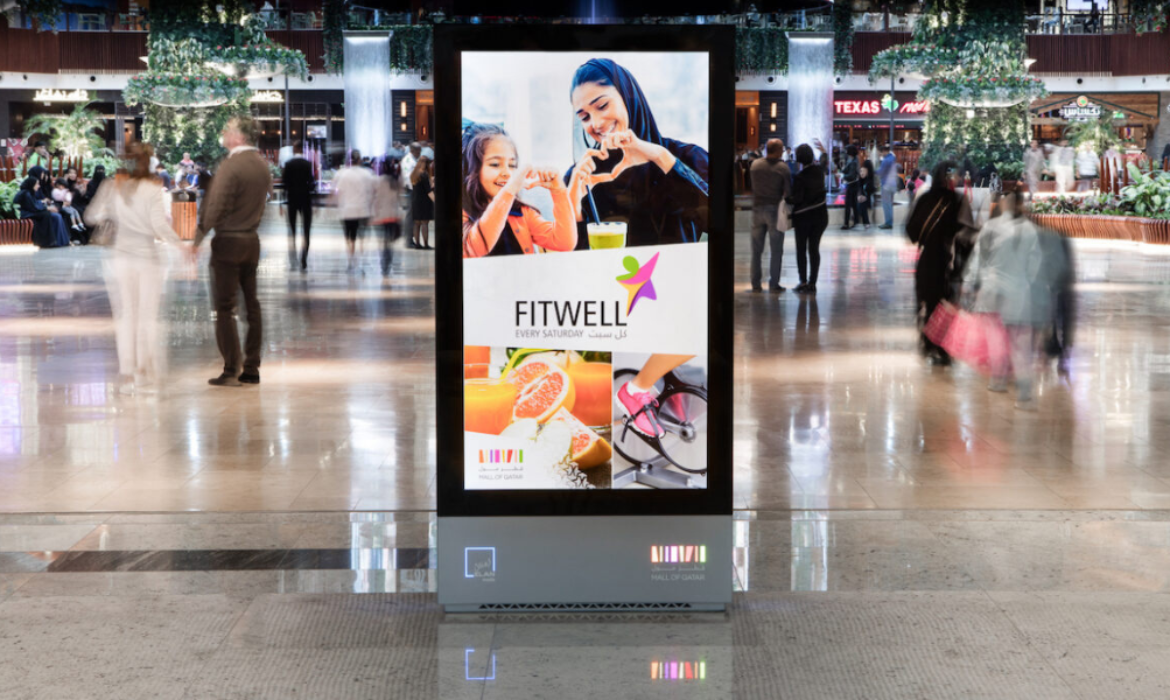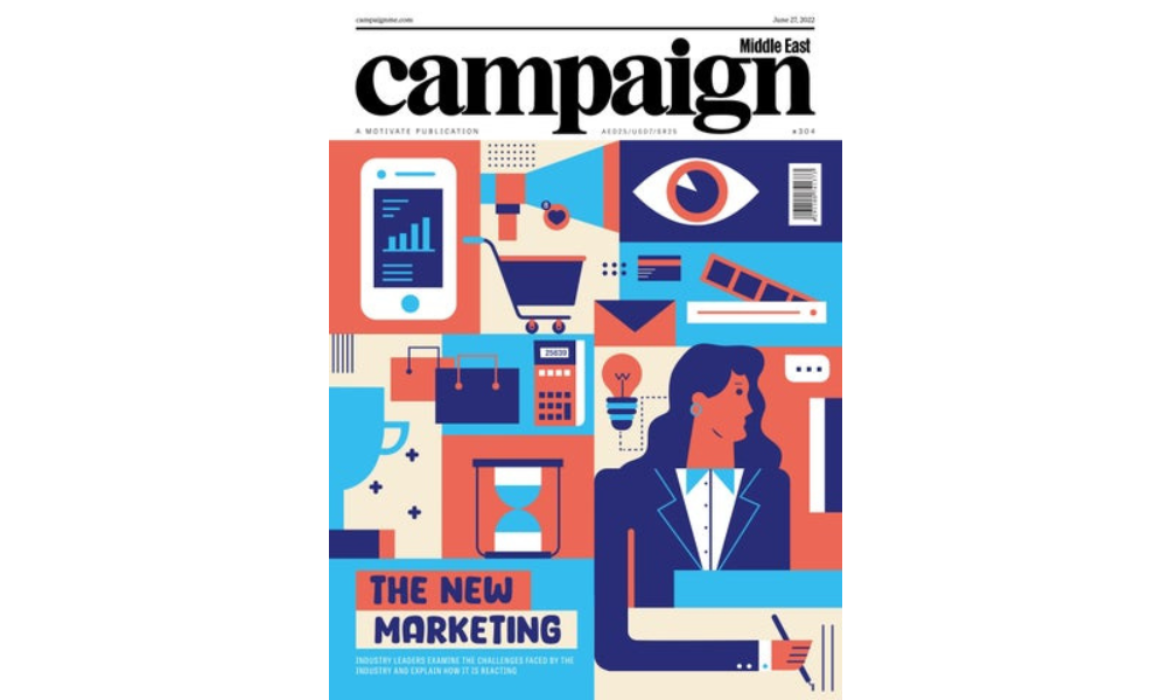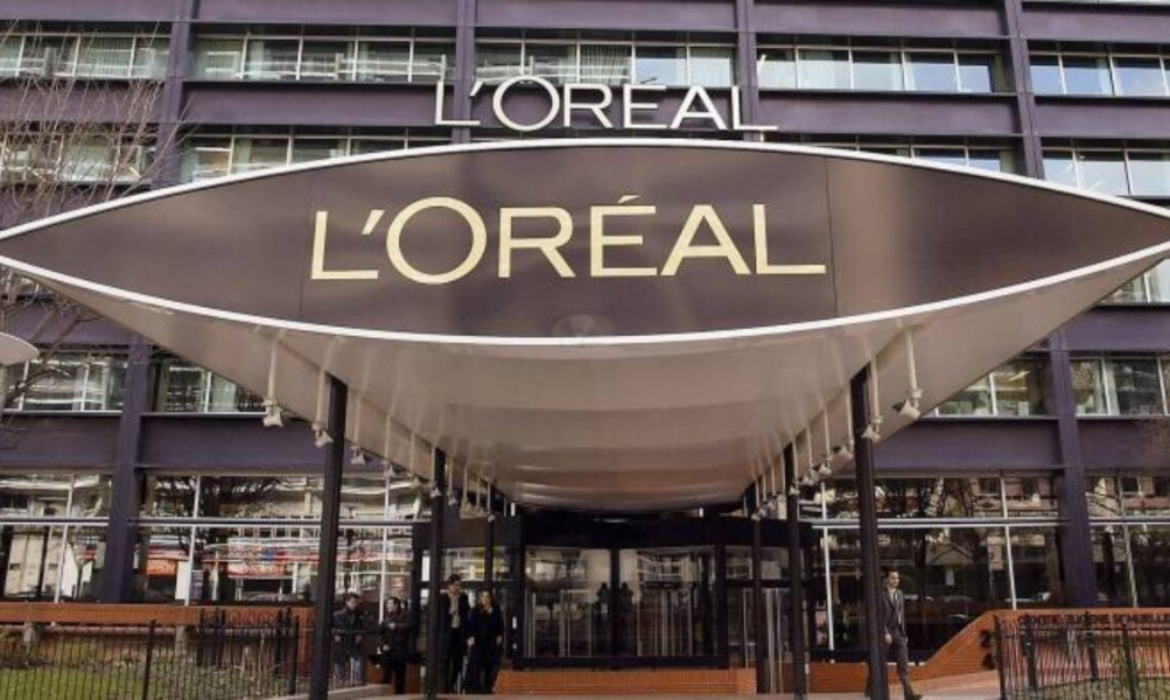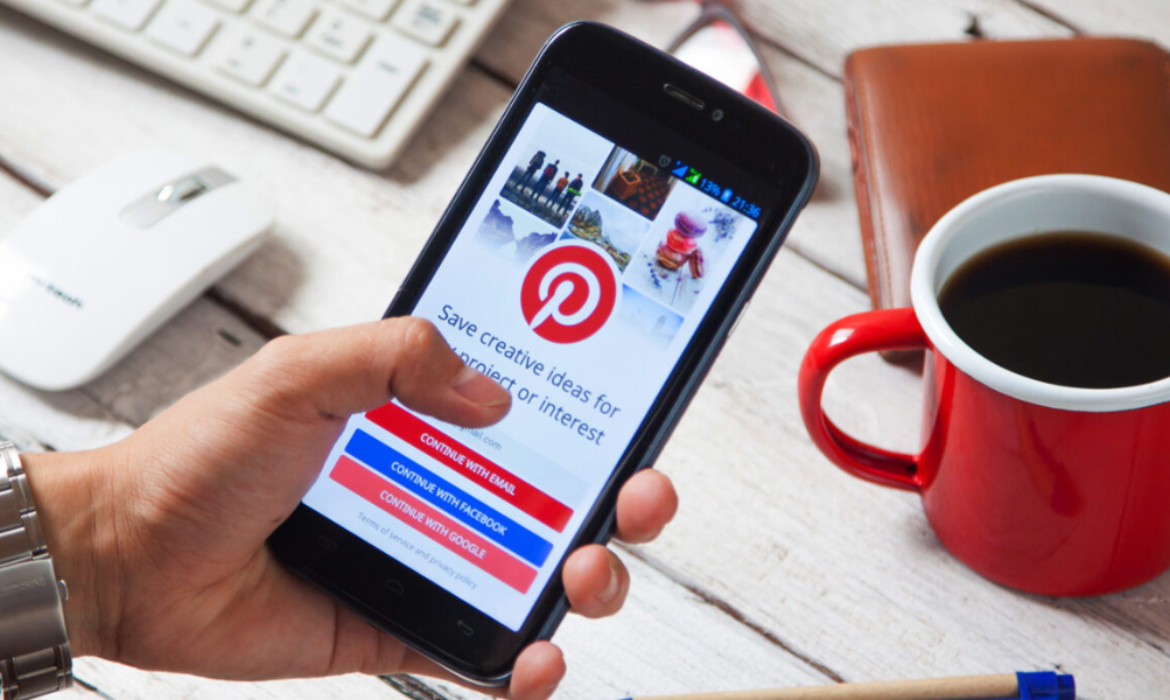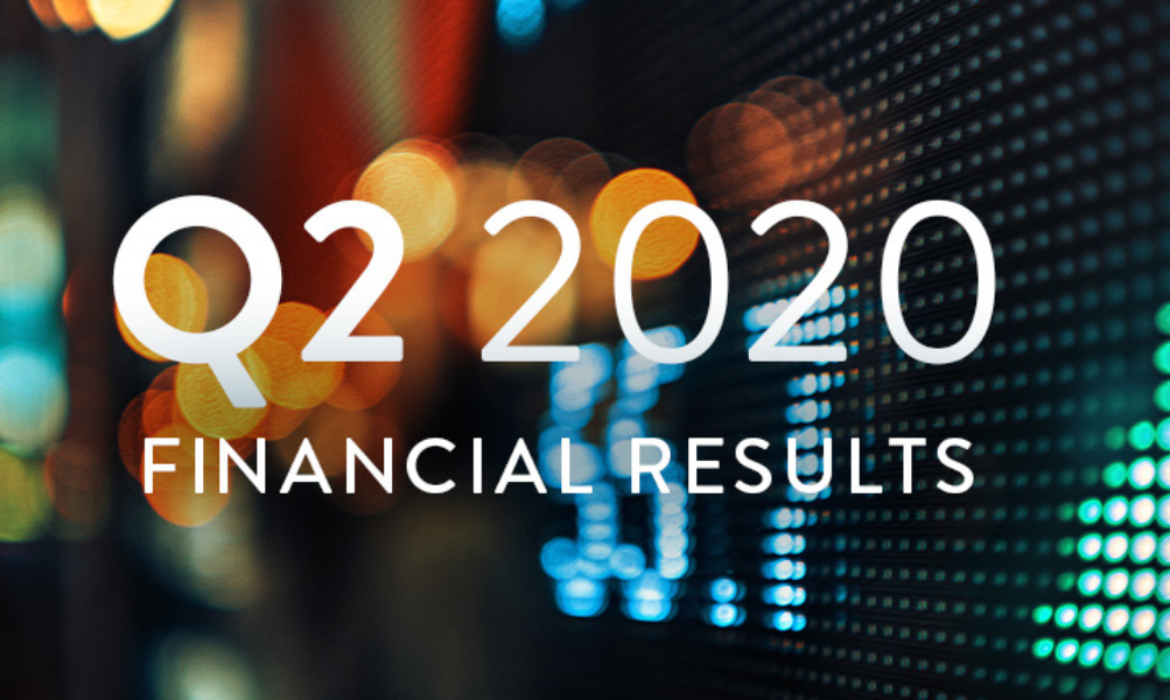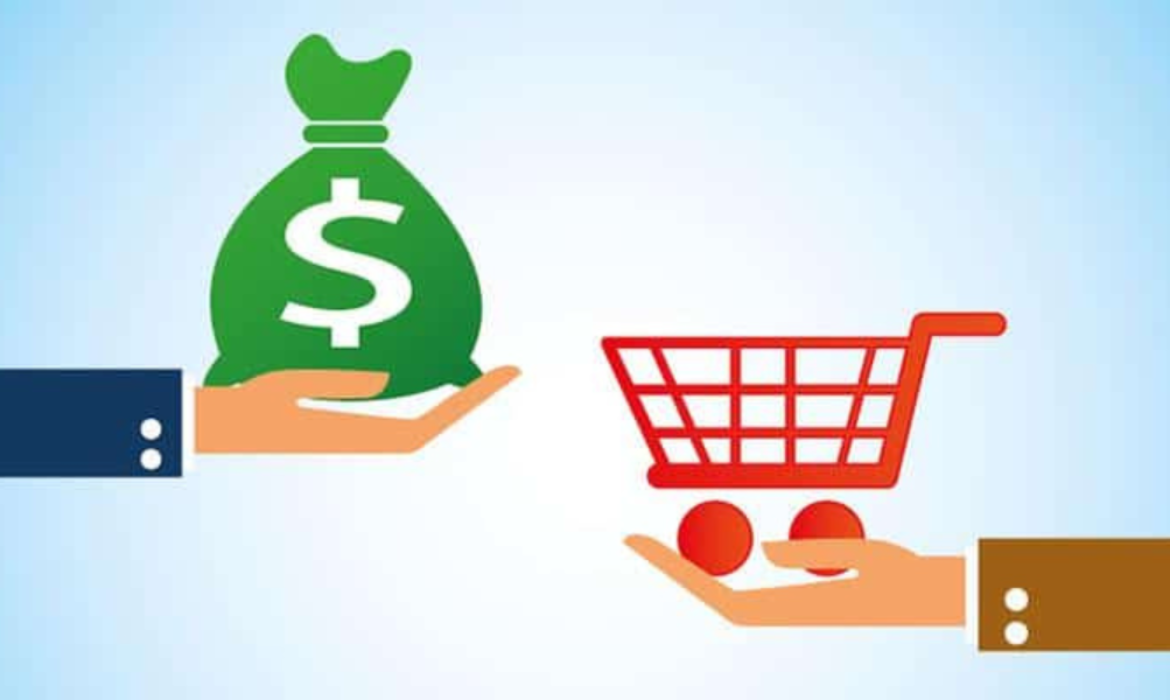Qatar-Based Elan Media Launches Programmatic Buying For DOOH Assets
Elan Media, a Qatar-based out-of-home advertising firm, has implemented programmatic buying for all of its digital out-of-home (DOOH) assets in Qatar and Oman. This move makes Elan Media a pioneer in Qatar to enable its clientele DOOH advertising is an agile and economical impression-based buying system. It also positions itself in the second rank in GCC to do so.
Elan Media’s large DOOH network, which includes assets at the Mall of Qatar, Doha Festival City, Ezdan Mall, Mall of Muscat, and the forthcoming Place Vendome Mall, now have access to flexible and cost-effective purchasing technology. This technology is based on the one offered by leading DOOH solutions provider, Broadsign Reach.
Relevant Read: Trade Desk Partners With Choueiri Group For Better Programmatic Access In MENA
The advertising firm also intends to make the service available to all of its future digital roadside assets.
Jamie Ball, Chief Operating Officer, Elan Media went on record to comment –
“With the launch of programmatic buying we are once again living up to our reputation as the DOOH pioneers in Qatar and Oman. This buying system offers major benefits to our advertising clients including heightened flexibility of buying, and optimum campaign efficiency as advertisers buy based on the number of impressions created just like with online advertising.”
With regard to the impressions, Ball said that advertisers will be able to purchase as few as 1,000 impressions barring any minimum purchase volume limitations.
Relevant Read: Loreal And Trade Desk Launch First Programmatic Campaign In Gulf!
How else does this move cater to advertisers?
Well, for starters, advertisers can now use Elan Media’s premium inventory more efficiently and seamlessly – as reported by the Director of Business Development EMEA, at Broadsign, Stuart McMahon.
Advertisers can also leverage the inventory and integrate it into omnichannel campaign bids to increase audience reach with more dynamic content.
McMahon added –
Advertiser interest in Programmatic DOOH is surging worldwide, introducing an unprecedented new opportunity for the DOOH market, and we’re excited to work with Elan Media to onboard some of the first premium DOOH inventory from Qatar and Oman to our programmatic supply-side-platform Reach.
In each advertising cycle, Elan Media will continue to offer traditional manual booking methods with its specific inventory. The clients are free to choose from both alternatives.
Also Read: All You Need To Know About The Rise Of DOOH Advertising
Success Story Of First Programmatic Campaign In Gulf!
One of its kind and the most awaited event in the history of advertising took place in Sheikh Zayed Road. Sheikh Zayed Road is the most iconic and busiest road in Dubai. The event was an Out Of Home campaign by The Trade Desk and L’Oreal recorded by BackLite Media.
James Harrison, The Chief Commercial Officer at BackLite Media, shared a post on his LinkedIn profile congratulated all involved in the campaign over its success.
“Something I’m very proud of and really excited to share. Back in March, we recorded a first for the region. In collaboration with The Trade Desk, Marie-Christine Kienlen, Morgane Desessard, UM MENAT, the guys at L’Oréal and through the efforts of our fantastic team here at BackLite Media with Ashin John at the forefront. We launched the first Programmatic Out of Home campaign on Sheikh Zayed Road, the busiest and most iconic road in Dubai.”
The event was the first programmatic DOOH campaign launched in the Middle East, and because of its huge success, it is inevitable to see more such events in the future. The Trade Desk has already started strengthening its bonds with the local brands active in the Middle East.
James Harrison further stated that “ I salute all involved, for taking this step and showing the region what can be done through Data-Driven Out of Home. It’s the first step of many, and we’ll be along for the ride, helping the market understand the importance of data when planning Out of Home.”
With the help of this campaign, L’Oreal successfully reached 1.4 million individuals. L’Oréal, was able to target audience groups by geography using The Trade Desk’s platform, based on where programmatic DOOH was accessible.
“We have invested heavily in our data analytics platform, BackLite Intelligence, and will continue to do so, to provide a robust and transparent platform to plan and buy programmatically,” stated James Harrison.
Loreal And Trade Desk Launch First Programmatic Campaign In Gulf!
The Trade Desk, a global advertising technology firm, has announced the success of a programmatic DOOH campaign with L’Oréal in the Middle East – a first for both brands in the area.
The campaign, which intended to raise awareness of L’Oréal’s new Yves Saint Laurent Libre Intense perfume, was advertised on digital screens strategically positioned in Dubai’s trendiest locations such as DIFC Gate Village and Sheikh Zayed Road.
It is the first time in the Middle East that L’Oréal has initiated a DOOH campaign using advertising inventory purchased programmatically through The Trade Desk.
The campaign successfully reached 1.4 million individuals and had a bid win percentage of 95%. L’Oréal was able to target audience groups by geography using The Trade Desk’s platform, based on where programmatic DOOH was accessible.
Universal Media (UM), a worldwide media and advertising firm, and Matterkind, an activation intelligence business, were instrumental in making the campaign a reality.
James Patterson, VP of Client Services, EMEA, at The Trade Desk, said –
“The results of our latest campaign in MENA with L’Oréal precede an exciting shift in the world of adtech – DOOH is coming back to centre stage as the world gets back on its feet. We’re thrilled to be able to support our clients with smart, user-friendly technology.”
Patterson also added this campaign is a significant step forward for the region in terms of programmatic DOOH, and that they look forward to assisting their clients in reaping the benefits of this new channel in the near future.
Bishr Hamwi, online brand manager (YSL) at L’Oréal, said that the Gulf area is ecstatic to be able to get DOOH placements via programmatic – YSL has been monitoring its efficiency and effect for brands in the UK and US and they thought it would perform well in the Gulf as well.
He said that their team was overjoyed when YSL became the first brand in the GCC area to trial it for their hero launch, LIBRE EDP INTENSE!
Hamwi added –
“Thanks to UM and The Trade Desk, the campaign exceeded our expectations and we are looking forward to accessing more programmatic DOOH inventory available in the coming months.”
It is important to note that while this is the first campaign for a DSP in the region, it will not be the last. Why?
Because The Trade Desk intends to strengthen its relationships with local partners in order to increase the presence and reach of brands utilizing the platform in the region.
Morgane Desessard, UM media supervisor said the fast-paced test-and-learn methodology of L’Oréal Luxury division to planning and buying DOOH inventory programmatically was an intriguing potential that they wanted to explore to support their digital media advertising mix.
Deseddard also added that with the help of its sister business, Matterkind, they were able to launch their first DOOH campaign through The Trade Desk. This allowed them to take advantage of benefits such as flexibility in terms of area and time, as well as access to real-time data.
Gosia Wajchert, Head of Matterkind, part of IPG Mediabrands, commented –
“Matterkind and The Trade Desk have been working on programmatic innovations and FIRST IN MENA products for a year now and I am really pleased to see the continued results that come out of our partnership.”
Implemented in association with Broadsign Reach SSP and local publishers Backlite Media and Elevision, the campaign ran for a period of two months during Spring 2021.
Direct-Sold Ad Revenue Declines With The Rise Of Programmatic
According to research conducted by marketing platform LiveIntent, direct-sold ad income has declined for publishers over the last year in favor of programmatic.
In the automobile industry, programmatic revenue augmented by more than 105 per cent as demand for private cars was pushed by a fall in public transit use.
Education newsletters also grew by 75%, which is an indication of parents’ struggles to deal with school closures and full-time care from home.
Let us elucidate with an example and take the case of Likemind, an email and web publisher focused on learning. The CRO of Likemind, Peter Chang states –
“ Email revenue has traditionally been driven primarily by 1:1 relationships with advertisers and will continue to be a primary focus for us, as advertisers have leaned into their CRM databases, we have seen an increase in email revenue driven by programmatic buys as part of larger campaigns by smart advertisers that understand performance and measurement.”
Overall, food-and-drink newsletters experienced a 60% YoY rise in gross revenue, owing primarily to increased home ordering during the pandemic and a shift in ad spending to inventory in this category.
According to the report, more market dollars flowed to direct to consumer (DTC) items during the last year since the epidemic drove individuals to stay at home.
This also explains the 4.42 per cent increase in arts-and-entertainment newsletters.
LiveIntent CEO, Kerel Cooper, said that it was not surprising to see publishers enjoy the programmatic outcomes. He says –
“ Advertisers want campaigns that are measurable, targetable and have incremental reach outside of the walled gardens. That is the email newsletter ecosystem to a tee.”
Cooper also adds that with the demise of third-party cookies, logged-in and measurable targeting has become more scarce and hence, the value of ads will continue to grow in the future.
This study by LiveIntent is based upon the company’s 2,500 publishing and advertising clients.
Verizon Media Rolls Out Connect ID To Replace Third Party Cookies
Verizon Media this week rolled out a new unified identity solution Connect ID in an industry-wide effort to help advertisers and marketers to transition from using third-party data as the center of online ad targeting.
The third-party cookies will soon be redundant as Google and Apple take steps to limit audience tracking owing to consumer data privacy concerns. Though the advertising industry has seen numerous innovations by many growing companies such as Lotame introduced Panorama ID, Verizon claims Connect ID is powered by direct relationships with 900 million global consumers.
The company has valuable first-party data about the activities of millions of customers based on its 30+ owned and operated consumer brands including Yahoo (content, search, and mail), AOL, and TechCrunch. Verizon Media will generate 200 billion data signals based on deterministic first-party data to create an identity graph that can help advertisers target and track audiences across devices. With Connect Id, the company aims to provide audience targeting on a large scale.
The company is promoting Connect ID to more advertisers and publishers to use its programmatic platform to buy and sell digital ad placements in an ongoing effort to capture the market share of the industry’s biggest players. The company has a full-stack advertising technology solution with a demand-side platform (DSP) for buyers and a sell-side platform (SSP) for content providers like Newsweek that are looking to unlock the full value of their advertising inventories. Dev Pragad, CEO of Newsweek, said,
We want to deliver the best experience possible for our audiences as well as maximize revenue for the premium content we produce. To ensure we can maximize our clients’ user experience while maximizing our revenues, we need partners like Verizon Media who can connect our audiences with quality advertisers and experiences, maximize yield and ensure our audiences’ privacy choices are respected. That’s why we’ve signed up for Verizon Media ConnectID.
As a part of the launch of Connect Id, the company also announced several partnerships with leading data providers like Acxiom, Adstra, Equifax IXI, Experian, Neustar, TransUnion, and Throttle. Concurrently, Verizon Media Connect Id is also working with IAB Tech Lab programs to develop industry-wide pro-privacy solutions for addressability with accountability. Jordan Mitchell, SVP, Head of Consumer Privacy, Identity, and Data, IAB Tech Lab, said,
IAB Tech Lab is proud to have Verizon Media involved in the development of new privacy-preserving addressability standards and industry accountability programs through Project Rearc, and we look forward to their support of these standards and programs once they are released.
The unified ID helps advertisers buy, measure, and optimize ads while enabling publishers to manage, monetize, and navigate audiences–all without third-party cookies. The company says adoption of the unified solution delivered a 33% lift in performance compared to third-party cookies. Iván Markman, Chief Business Officer at Verizon Media told AdWeek,
Most of the identity solutions out there are largely dependent on third-party integrations. Most of the companies don’t really own the customer relationships, and more important they won’t have the assets to provide a value exchange.
Presently, Verizon Media ConnectID is available in North America, APAC and select LATAM markets at launch and will soon roll out to more markets.
IAS Partners With Pinterest Over Fraud And Viewability Measurement Reporting
Digital ad verification provider Integral Ad Service( IAS) has partnered with Pinterest to able to deliver marketers access to viewability and fraud measurement reporting that covers its mobile in-app campaign.
IAS mentioned that its reporting includes standard Pinterest ads and video ads for in-app inventory, all updated on a daily basis.
This new integration will help advertisers to have access to viewability and invalid traffic monitoring and reporting across promoted pins and videos as well as Independent, third-party reporting by IAS and a global measurement that allows a holistic view across any brand’s entire Pinterest campaign.
With this announcement, Pinterest is observing an all-time high level of user engagement as well as people are searching for creative solutions to ‘life-at-home’ in this pandemic. The searches on the platform for “work from home” are up 1,411% and searches for “children’s activities” are up 4,055%, globally.
IAS also noted that 82% of users access the platform via mobile devices, and it is even more significant for advertisers to measure mobile campaigns on Pinterest accurately.
With measurement being critical to evaluating and optimizing ad quality and related media spend, Lisa Utzschneider, CEO of IAS said,
“IAS is excited to partner with Pinterest to offer marketers a mobile viewability and fraud measurement solution that works in-app, where people are engaging.”
“This partnership helps provide the transparency that marketers need to optimize their campaigns on the popular network.”
Read more: IAS Issues Threat Alert Regarding The Latest Digital Ad fraud Scheme
Everything the Q2 2020 Financial Results of Tech Giants Have to Say
Big Tech giants have revealed their quarter financial performance in these turbulent times. Here are the Q 2 financial performance, insights, and earnings details:
Alphabet
Google’s parent company Alphabet beat the expectations for its Q 2 earnings despite a dip in the advertising. However, it marked its first year-over-year revenue decline in its history as the pandemic slowed the economic activity and advertisers pulled back their spending. Though there is a slowdown in the advertising growth, Google pointed to newer long-term opportunities in cloud computing and artificial intelligence, YouTube, and shopping. For the rest of the year, in anticipation of slowdown, the company has cut marketing spend by half and also freezes hiring.
Google is also facing antitrust investigations of its search and Android business and is expected to result in a legal action that could cover issues from search to digital advertising space in the coming months.
By the numbers:

Image Credit: CNBC
- $2.6 billion declines in year-on-year advertising revenue.
- Google’s total quarterly revenue $29.9 billion of $38.3 billion is from advertising.
- YouTube ad revenue increased 6% to $3.8 billion.
- Google Cloud sales grew 43% to $3 billion.
- Total Net income reported $6.96 billion compared to $9.95 billion in the year-ago quarter.
Response:
Though there is a slowdown in the advertising growth, Google pointed to newer long-term opportunities in cloud computing and artificial intelligence, YouTube, and shopping.
For the rest of the year, in anticipation of slowdown, the company has cut marketing spend by half and also freezes hiring. Ruth Porat, Chief Financial Officer of Alphabet and Google said,
“We continue to navigate through a difficult global economic environment.”
Consumers are returning to more commercial search queries and advertisers are gradually increasing their search spending towards the end of the quarter. However, Ruth Porat cautioned,
“We believe it is premature to gauge the durability of recent trends, given the obvious uncertainty of the global macro environment.”
Google is also facing antitrust investigations of its search and Android business and is expected to result in a legal action that could cover issues from search to digital advertising space in the coming months.
Amazon
The e-commerce giant delivered some eye-popping numbers during Q2 beating earnings expectations and reported a double-digit revenue year over year. With the flurry of online orders amid the coronavirus pandemic, sales soared by 40%. The online grocery sales tripled Y-o-Y and the grocery delivery capacity by more than 160%. The demand for online shopping sky-rocketed and to fulfill the demand, it hired 175,000 more people in the period.
By The Numbers:

Image Credit: CNBC
- Revenue reported is $88.91 billion vs. $81.56 billion expected, the strongest and unexpected annual growth in years.
- Amazon spent $4 billion on coronavirus related measures as promised in Q1 and expects to spend another $2 billion during Q3 towards COVID-19 mitigation efforts.
- Amazon Web Services (AWS), its cloud computing service grew 29% compared to 33% in Q1.
- Amazon’s Other’ category that primarily consists of the advertising business ( a small slice of Amazon’s total revenues) was up 41% Y-o-Y and subscription services that include revenues from Prime membership also up 29%.
Response:
Amazon CEO Jeff Bezos said in a statement,
“This was another highly unusual quarter, and I couldn’t be more proud of and grateful to our employees around the globe.”
As reported by CNBC, Amazon CFO Brian Olsavsky said consumer demand in the pandemic shifted from consumables and groceries to categories “not so profitable” and normal mix of products. He said,“Amazon could ship a lot more.”
Amazon will conduct a Prime Day shopping event in the fourth quarter.
Despite the Congress probe, pandemic, and an anti-hate boycott from advertisers, Facebook beats all market expectations, revenue grew by 11%. This speaks volumes about the strength of the company’s appeal to marketers despite serious challenges. The top 100 advertisers’ that boycotted Facebook over its hate speech and misinformation policies constituted less than 20% of Facebook’s ad revenue. However, the boycott by large advertisers couldn’t rally small businesses who are reliant on Facebook.
By The Numbers:

Image Credit: CNBC
- 3.14 billion monthly users across all apps(Facebook, Messenger, Instagram, and Whatsapp), compared to 2.99 billion in the previous quarter.
- 1.79 billion Daily Active Users on Facebook, up 12% year on year
- 2.7 billion Monthly Active Users on Facebook, up 12% year on year.
- Revenue: $18.7 billion, up 11% year on year.
- It has more than 9 million active advertisers.
Response:
The company said in a statement,
“We are seeing signs of normalization in user growth and engagement as shelter-in-place measures have eased around the world, particularly in developed markets where Facebook’s penetration is higher.”
Mark Zuckerberg said on a call with investors,
“Some also seem to wrongly assume that our business is dependent on a few large advertisers. The biggest part of our business is serving small businesses.”
Two new initiatives were announced for small businesses- Facebook Shops and in-messenger commerce.
“This really is primarily focused on small businesses, individual entrepreneurs. Small businesses are the biggest part of our business, not large businesses.”
The company forecasts its revenue growth rate for Q3 of about 10%. while taking into account ongoing headwinds including macroeconomic uncertainty, ad boycott (formally began in July, after Q2 ended), regulations around ad targetting, and measurement.
Pinterest revenue grew 4% on user growth and advertisement. Users who started using Pinterest during Covid-19 continued to have engagement even after lockdown restrictions eased out at a few places. It reached a milestone of crossing more than 400 million monthly users, witnessing a strong growth from users under 25 who grew twice as fast as users over 25. The total advertising growth accelerated year over year in Q2 and small and medium-sized advertisers emerged as a key driver that made up nearly half of its revenue. New features like Shop Tab and the ability to shop from boards are worked upon to make content search easy for the Pinners.
ByThe Numbers:

Image Credit: CNBC
- Total daily video views (organic+ paid) grew over 150% year over year.
- Catalog from business increased in Q2 by more than 350% from Q1.
- Revenue from conversion optimization or oCPM, shopping ads, and auto bids continues to grow faster than overall revenue, and attributed conversions grew 2.7x year over year. 80% of CPC revenue is going through the auto bid.
- Users visiting shopping only surfaces grew more than 50% in the first half of 2020 and product only searches grew 8x.
Response:
As per CNBC, the company said,
“People needed Pinterest in Q2. They needed a service that helped them adjust to radically changed circumstances — one that inspired them to cook at home, build vegetable gardens, plan activities for their kids and set up remote offices and home gyms, to name just a few typical COVID-19-related use cases we saw during the quarter.”
Advertisers have increased budgets on Pinterest because of its strong commercial intent where advertisers get their traction without displaying ads with any controversial content.
Omnicom Group
Omnicom revenues decline 23% due to a decline in spending by the clients. In order to offset the decline in revenue 6,100 jobs were cut across its network, froze hiring, eliminated salary increases, implemented voluntary pay cuts across its agencies, and participated in government subsidy programs in 35 markets. It also shed 1 million square feet of real estate space as it terminated leases across markets in order to mitigate the impact of the pandemic. It is expected that these actions will result in the repositioning costs for the quarter of $278 million that will generate approximately $500 million in annualized savings.
Advertising revenue decline as the revenue of the programmatic business decreased where it offered principle-based buying options for clients.
By The Numbers:
- Reported revenue was $2.8 billion, down $854 million organically, or 23% from Q2 2019.
- Advertising business declined 26.6% and Third-party service costs which fluctuate directly with changes in revenue declined by approximately $400 million.
- Revenues declined in all disciplines except healthcare which grew 3.2% organically.
- CRM execution and support include events and field marketing businesses, which declined 27.6%.
- CRM consumer experience declined 25.6%, and PR declined 14%,
Response:
CEO John Wren said on the earnings call,
“The quarter posed extraordinary challenges. he effect of COVID and related lockdowns were unprecedented.”
The main reason for declines in Omnicon’s services was because the client from travel, retail, auto, and other affected verticals paused or cut spending whereas technology and telecom fared better.
After a tough and bad Q2, the company looks forward to the second half. The recovery may not be immediate but the impact will vary regionally and by vertical. Wren said,
“We think the worst is behind us, with Q2 being the worst point for year-over-year revenue declines.”
The company added a few new clients like Air France’s global agency of record account and Clorox’s media business in the United States.
Apple
Apple reports a slow down in revenue growth as the demand and supply was impacted due to the pandemic. However, it had reported a better quarter than Wall Street expected, showing growth across all product lines including iPhones and reflected growth across all geographic segments.
By The Numbers:

Image Credit: CNBC
- Revenues rose 11% to $59.7 billion against the estimated revenue of $52.6 billion.
- Apple reported iPhone revenue of $26.42 bn, a growth of 1.66%.
- The biggest growth was in iPad revenue at $6.58bn up from $4.48 bn.
- Apple reported service revenue of $13.1 bn against $11.5 bn the same period in the last year.
Response:
Apple CEO Tim Cook during a call said,
“Amid the most challenging global environment in which we’ve ever operated our business we’re proud to say that Apple grew during the quarter.”
The company’s subscription service and Apple Tv+ also performed well as most people watched content under lockdown. Apple did not issue guidance for the third quarter.
Read more on Q1 results: Where Do These Global Companies Stand At The End Of Q1: Performance, Insights, And Statistics
IPG’s UM Leads The Forrester Media Agency Wave 2020 To Rate Media Agencies
IPG’s UM worldwide is to be named as a leader in The Forrester Wave: Global Media Agencies, Q2 2020 report. The latter gave the highest rating to agencies that used data platforms to improve media execution and ad creatives and created an integrated and centralized experience for the customers.
UM worldwide led 10 media agencies for the evaluation. In order to qualify for the report, each agency requires $10 billion in yearly billing and employ more than 6000 employees.
Forrester principal analyst Jay Pattisall said UM aces the Forrester Media Agency Wave due to its Kinesso offering, its first Axicom based business. It uses data services for typical insights and now applying to develop content for digital ad campaigns, identify audiences, and target content to audiences in a precise way.
Forrester on UM Worldwide :
“Clients like UM for its application of emerging technologies, its partnership with agencies and publishers, and its data technology strategy. We like the agency’s emphasis on business analytics for decisioning and its future-forward approach to crafting data-informed, Hollywood-caliber content that generates new revenue streams for clients.”
Other strong contenders that also scored as leaders are Omnicom’s OMD, Publicis’ Starcom, and Dentsu’s Carat. Meanwhile, WPP agencies MediaCom, Mindshare, and Wavemaker scored well in execution in order to be placed in the next ‘best strong performer’ section but trailed behind Omnicom’s PHD, Publicis’ Zenith and Havas Media Group in the strategy section.
Jay Pattisall did not support the WPP media agencies’ decentralized approach and said,
‘My judgment is that a more centralized structure is more beneficial at this stage.’
Creativity partnership with media
‘Precision creative’ is becoming a core and critical competency among media agencies -where they create multiple versions of an ad to distribute to a highly targeted audience.
For instance, one agency used data to create a feature-length documentary called “5B,” and promoted it with paid promotions to ensure that it reaches the right audience. This shows that creativity lives inside media agencies or are closely partnered. Pattisall commented,
“Because of their ability to work with data platforms, technology, machine learning, and AI, the content create now is heavily data-driven.”
Programmatic is the new way
Forrester combined programmatic into media agencies’ overall buying competency. Today, everything is moving towards programmatic including digital and emerging areas like addressable TV.
One of the criteria for the report was to evaluate how the agencies used private marketplaces(PMP) to curate inventory and target appropriate inventory to the client and see the impact of the tactics on waste and fraud.
Learn more: Programmatic Advertising Platforms in 2020: A Complete Guide
Data and identity
Many agency data platforms are moving towards integration however, few still relied on some form of third party data. Therefore, media agencies are required to work along with the client to build first-party data. Pattisall said,
“It’s a changing world with privacy and tech companies’ approach to cookie deprecation, so they will need to continue to innovate to stay at the forefront of that.”
Having data on identity and audience will be beneficial for the media agencies to bring data-driven creatives to the forefront of their centralized offering. Pattisall added, “Scaling creative content with audience data is something I know desire.”
The way to the future for media agencies is a simplified offering that includes technology, media, and creativity.
Where Do These Global Companies Stand At The End Of Q1: Performance, Insights, And Statistics
We bring you insights and earning calls on various media companies, publishers, agencies, brands, and tech companies performing on a quarterly basis. The iteration focuses on media companies’ financial performance in the 2020 first quarter and taps all the vital data.
Q1 2020 earnings and performance
Though the waters are choppy ahead, we are optimistic that the worst is behind us and have learned to live with the new normal. Consumer habits are changing and the future is more accelerated towards the digital economy. The media landscape has changed especially the TV front and the focus is on opening businesses again with advertising driving the demand.
Q2 Outlook
Q2 advertising for publishers is estimated to be significantly down as much as 25-30% Y-o-Y and for some even 50-55% down. Few companies like Facebook, Snap, Dotdash expects Q2 revenue to be flat or slightly up Y-o-Y. Here are a few key points to consider:
- Google revenue declines by 15% year- over -year, though search activity increased. Advertising spends decreased due to coronavirus recession. However, other advertising mediums are growing like connected TV, ads in video games, or ads in video conferencing.
- International TV ad sales are down by 30-35% Y-o-Y whereas programmatic revenue decreased by 40-45%.
- Performance ads are down year-over-year and demand from industries like restaurants, travel, retail, auto, and luxury has declined.
- Some advertisers seek opportunities and increase spending in financial services, insurance, telecom, technology, streaming services, and app downloads. Gaming and streaming are gaining a strong foothold and permanently taking a share of our time and wallets.
- CPM’s down by almost 50% giving an advantage to advertisers for huge bargains. New and existing advertisers are looking to acquire new customers at a lifetime low value.
- With no new live events expected on TV till September/October, it will boost the growth of CTV.
- Attribution for marketers is easy as most sales are online than in-store. The animation is expected to be robust in Q3 and Q4.
- 90-95% workforce for media companies are operating from home and CMO’s can justify spending using data-driven advertising with trackable ROAS.
Let’s take a look at the financial report card of the global giants.
The Trade Desk
The opening remarks from the trade desks on the present scenario are as follows – Programmatic’s greatest feature is ‘Agility’. One can easily start and stop the programmatic campaigns, unlike linear television. Early April witnesses advertisers stopped/pause ad spend in certain verticals especially travel and remained active in health, technology, games, home, and garden.
However, by mid-April year-over-year spend decline stabilized, and as the month progressed things started improving. Advertisers were trying to adapt to the present environment. For instance, restaurants changed their messaging to “We are open” or “We deliver.” Consumer products focused on pantry loading and travel companies planned to waive off cancellation fees for bookings. Basically, advertisers started to strategize on how to run businesses on the other side of the pandemic. Now, every company is trying to work out an advertising strategy to connect to consumers and gain share once the economy gets going.
CTV is a clear winner as linear TV’s life is shortened. Unlike traditional TV ads investment where brands and agencies commit billions of dollars without knowing the content and audience, they have the freedom to be more deliberate, liberal, and agile on CTV.
 Roku:
Roku:
- Pandemic has accelerated the shift to streaming by viewers due to excellent content and value.
- In the short term, the video advertising business has slowed down due to budget cuts and low spending by advertisers.
- In the streaming business, active accounts grew roughly 38% Y-o-Y with an increase in new accounts of more than 70% Y-o-Y.
- Streaming hours grew roughly 80% in April and the increase in streaming hours per account is approximately 30%.
- It is estimated that ad business will grow at a slower pace and gross profit margin will be lower than expected for the year.
- The behavioral changes of TV ad buyers are positive in the long-term and more people are expected to stay home to control spending in the light of economic hardships and the shift to streaming business will grow further.
 Google:
Google:
- In March there was a sudden slowdown in ad revenues owing to COVID 19 and lockdown orders. The first two months of Q1 reflected strong growth. Google search and other advertising revenues generated $24.5 billion, up 9% Y-o-Y.
- After the 2008 crisis, the Google search can be adjusted easily-quickly turn-off and back on which is cost-effective and ROI based. At the inception of the coronavirus crisis, users’ interest was more for information on the virus and non-commercial topics providing less opportunity for monetization.
- Q2 looks difficult for the advertising business.
- YouTube advertising revenues were up 33% year-on-year to $4 billion however there were different performance trajectories for direct response and brand advertising.
- Direct response continued to grow throughout the quarter but brand advertising growth grew for the first two months of the quarter and declined in March. This resulted in the slowdown of Youtube ad revenues by the end of March.
- Similarly, networking ad revenue was $5.2 billion, up 4%Y-o-Y for the first 2 months of the quarter, and declined in March in the low-double-digits year-on-year.

Spotify:
- Ads are a small part of the business, nearly 10% of the overall revenues. Therefore it is less impacted compared to other businesses.
- From a long term perspective, it will be an opportunity to move from linear to on-demand due to COVID 19 crisis.
- It is suspected that advertisers will move from pure reach to more measurable ad formats -mostly analog ad formats.
- The conjecture on advertising and consumption front is what is already happening of linear shifting to digital.
Learn more: Spotify Adds $1.7B To Market Cap In 23 Min Post A Deal With Joe Rogan, World’s Leading Podcaster.
![]()
Rubicon:
- The first half of April’s revenue was roughly 30% down until it showed signs of stabilizing in the second half.
- CTV continued to grow at a slower rate in April with a Y-o-Y increase of nearly 10%. Ad slot availability grew by roughly 25% compared to pre-COVID 19.
- Being an omnichannel SSP there has been diversity in ad categories and even more after the merger with Telaria. Certain verticals were highly impacted like travel in entertainment but e-commerce, technology, and direct-to-consumer were benefitted.
- Upfront deals are canceled and focus is shifted to spend from linear to the spot market that programmatic serves.
 Microsoft:
Microsoft:
- Reduction in ad spend affected Search and LinkedIn business and assumes that the advertising spend will not improve in Q2 as well.
- Search revenue ex-Tac increased by 1%.

Apple Advertising:
- The economic slowdown and uncertainty on business reopening have impacted the advertising business – which is the sum of App Store search ads, Apple news, and third party agreements on the advertising front.
- This slowdown and uncertain future will have a strong effect on the Service business for the June quarter.
 Verizon:
Verizon:
- Owing to the COVID-19 crisis, ad revenue declined by 10% in the second -half of March and the rate of decline only increases in April.
- Industry forecasts a fall of 20-30% in digital media and Verizon media results are likely to be similar.
- It also experienced a decline in advertising and search revenue due to hold back or cancellation of campaigns by advertisers and users searching for fewer commercial terms providing less opportunity for monetization.
- Finally, some staggering numbers were seen- 200% up on gaming, 40% up on video, and 10 times up on the collaboration tools. 800 million calls a day, is double the amount on Mother’s Day, the biggest day of the year.

Netflix:
- Increase in subscriber growth in March and is a pull forward for the rest of the year leading to an assumption that subs will be light in Q3 and Q4.
- Filming is stopped globally except Korea and Iceland.
- Customer services are fully restored with 2000+ agents working remotely.
- With the lockdown orders coming into effect in LA, animation production is up and working from home whereas the post-production of 200+ projects is in pipeline remotely.
- Series writers’ rooms are operating virtually.
- Netflix has invested in Open connect, a pioneering cache system that puts content library as close to members’ homes as possible. This enables ISP’s to run their network efficiently and at a lower cost. However, some countries networks may face issues due to the increasing usage of the internet.
 Omnicon
Omnicon
- The company doesn’t collect weekly revenue numbers by the agency and roll them up at the Omnicom group level.
- Q2 downfall is expected in double digits and year-on-year revenues will be down.
- The future is challenging but the company expects to get many of those people back as they move into the year ahead.
Learn more about the quarterly performance of other media companies: Financial Report Card Of The Global Giants And Industries In COVID-19
Publishers Withdraw Ad Inventory From The Market To Protect Ad Prices
Generally, conventional wisdom says a publisher would sell more ad units at a lower price in a weak market. However, publishers are doing the opposite and pulling their inventory to take a short-term revenue hit and protect their inventory price from falling further. This will help their business in the long run by not falling into the trap of price cuts which would be difficult to win back.
Programmatic advertising market operates under an auction system, lower advertiser demand, and higher web traffic to publishers site has pushed programmatic ad CPM’s down by 10%-20%. Since buyers are now more loyal to price than brands, publishers are preventing prices to tank further to a point of devaluing their inventory over the long term. While some publishers are reducing their inventory in the open market to keep the prices from falling further, others are using ad slots to push internal subscriptions or eliminating ad slots from the pages. For instance, Buzzfeed is getting rid of display ads that receive lower viewability scores.
Unfortunately, the publishers are acting independently and not considering the impact on the broader market. They aim to protect their own inventory prices from falling low as they fear it will take a longer time to return to the previous levels especially if advertisers are buying at a bargain now and unwilling to pay more later when things are back to normal.
As quoted by Digiday, Andy Ellenthal, CEO of the ad sales reporting platform STAQ shares a similar opinion and said, When advertisers return to their normal spending amounts, “they’re going to absolutely remember that a publisher was 25 cents in April of 2020.”

Image Credit: Digi Day
As per the above STAQ graph, the average U.S. display ad CPM in the open auction has fallen from a high of $1.34 on March 1 to $0.91 on May 3.
Even though average CPM has bottomed out on April 8 at $0.83, Andy Ellenthal believes CPM’s will not experience a U-shaped recovery but more of an L-shaped recovery, a slow and steady upward trend. This means publishers whose CPM has fallen least will have to cover the shorter route to return to previous prices.
DigiDay interviewed a few publishing executives and one publishing executive said,
“I’ve got to manage my supply to keep it in balance with demand, and demand has fallen so fast that now we’re trying to get ahead of the game. How much supply can we take off the table to control the CPM without actually truly hurting our business more than it’s hurt now?”
A second publisher executive said that the removal of one ad unit across their sites is equivalent to more than 1 billion monthly impressions. It is a generous number but not significant enough to move the market. Media Math’s DSP sees more than 180 billion impressions each day.
On this Ethenall said,
“These publishers always have to strike a balance between fill and yield. Chances are they are not going to fill 100% of their ad slots right now. If you have a billion impressions that go unsold anyway, what’s the value of them if they’re only pulling down pricing for your better impressions?”
Many publishers have adjusted their floor price to a minimum level at which the inventory can be sold. However, the lower ad demand has made the publishers pull inventory and protect prices as inside programmatic advertising, everything revolves around “Price.”
One of the publishers used to increase floor price by 15% every two weeks since the beginning of Q1. However, in the second half of March, a significant number of impressions went unsold. The publisher could have reduced the price to sell his inventory but he didn’t and said, “in no way do I want to drop my floors to 25 cents because I don’t want crappy ads coming in.”
Lower the ad prices, the higher the chances of giving in to undesirable advertisers who can jeopardize the ability to attract genuine advertisers. Publishers use this opportunity of lower demand to seek out prospective advertisers, but they are wary that lower CPM can alleviate advertiser’s interest in doing programmatic direct or private marketplace deals.
Publishers are also looking at this opportunity to experiment repurposing of impressions that can boost their other businesses and become less reliant on advertisers. For instance, if a publisher can see that house ad proclaiming its subscription product can attract more subscribers and yield than those impressions to advertisers, they would monetize on house campaigns and not take revenue from programmatic advertising.

